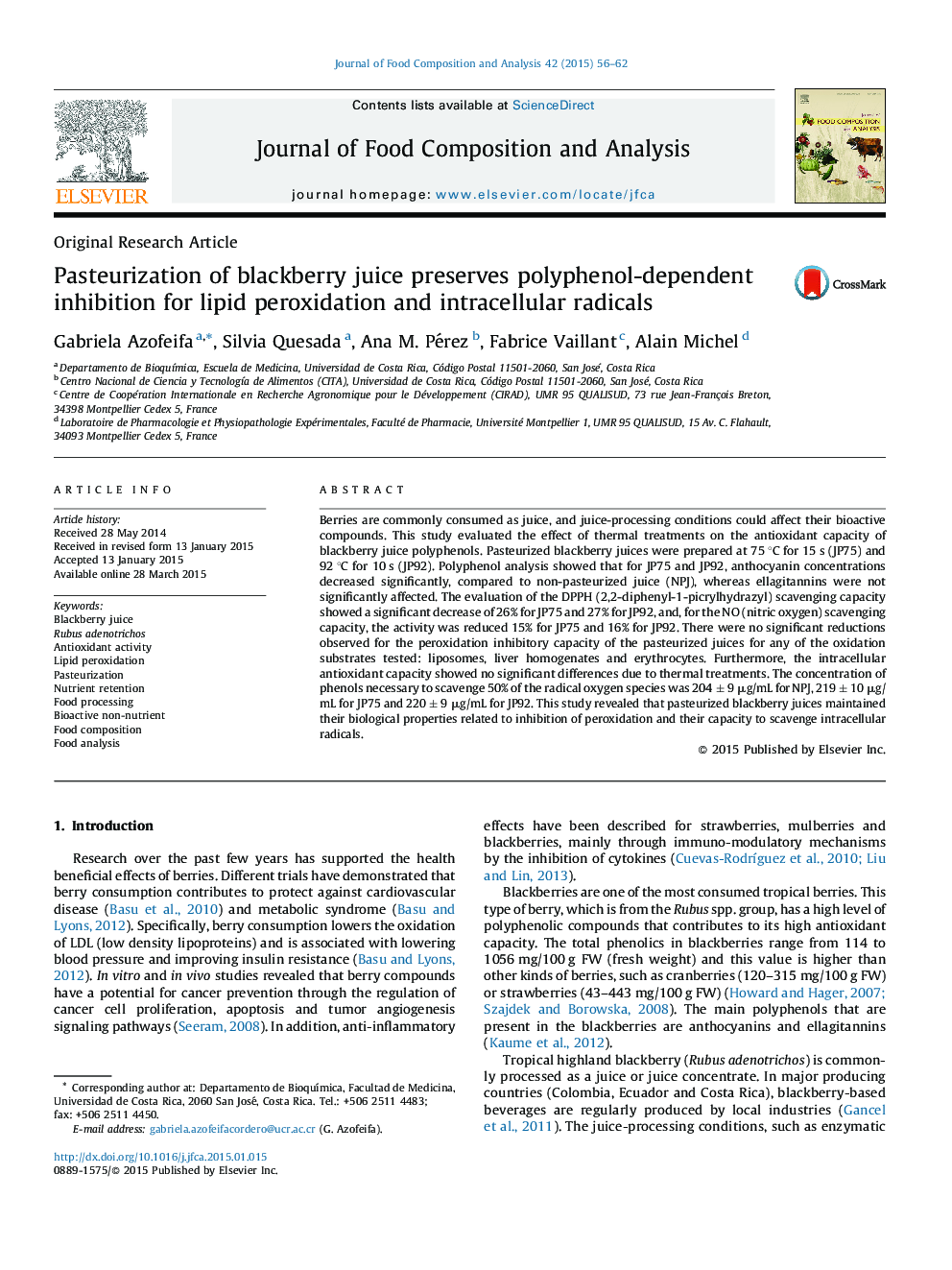| Article ID | Journal | Published Year | Pages | File Type |
|---|---|---|---|---|
| 7620433 | Journal of Food Composition and Analysis | 2015 | 7 Pages |
Abstract
Berries are commonly consumed as juice, and juice-processing conditions could affect their bioactive compounds. This study evaluated the effect of thermal treatments on the antioxidant capacity of blackberry juice polyphenols. Pasteurized blackberry juices were prepared at 75 °C for 15 s (JP75) and 92 °C for 10 s (JP92). Polyphenol analysis showed that for JP75 and JP92, anthocyanin concentrations decreased significantly, compared to non-pasteurized juice (NPJ), whereas ellagitannins were not significantly affected. The evaluation of the DPPH (2,2-diphenyl-1-picrylhydrazyl) scavenging capacity showed a significant decrease of 26% for JP75 and 27% for JP92, and, for the NO (nitric oxygen) scavenging capacity, the activity was reduced 15% for JP75 and 16% for JP92. There were no significant reductions observed for the peroxidation inhibitory capacity of the pasteurized juices for any of the oxidation substrates tested: liposomes, liver homogenates and erythrocytes. Furthermore, the intracellular antioxidant capacity showed no significant differences due to thermal treatments. The concentration of phenols necessary to scavenge 50% of the radical oxygen species was 204 ± 9 μg/mL for NPJ, 219 ± 10 μg/mL for JP75 and 220 ± 9 μg/mL for JP92. This study revealed that pasteurized blackberry juices maintained their biological properties related to inhibition of peroxidation and their capacity to scavenge intracellular radicals.
Keywords
Related Topics
Physical Sciences and Engineering
Chemistry
Analytical Chemistry
Authors
Gabriela Azofeifa, Silvia Quesada, Ana M. Pérez, Fabrice Vaillant, Alain Michel,
